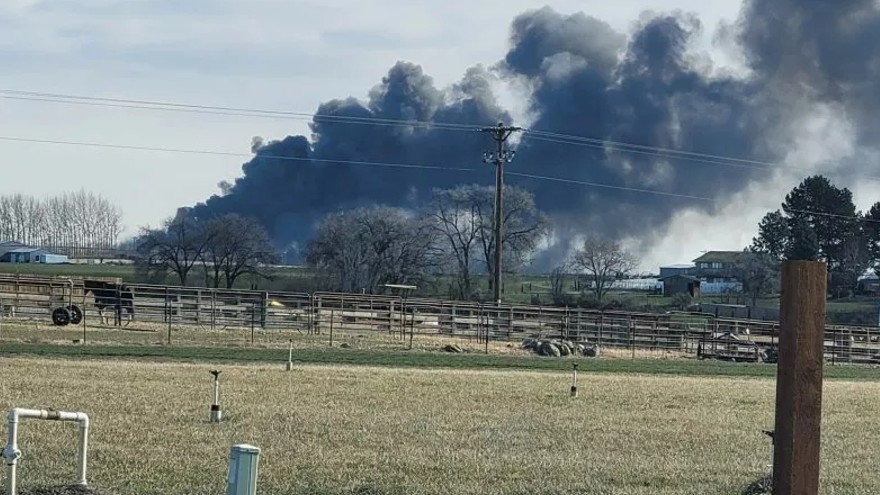At least sixteen fires have broken out at food processing plants, impacting the nation’s supply of beef and poultry
Published: April 21, 2022 | By Michael Robison https://timcast.com/news/strange-trend-of-food-processing-plants-fires-manifests-across-the-us/

There has been an outbreak of fires in food processing facilities across the nation in the last six months as food prices soar and supply chains are stressed to their limits.
The fires began showing up regularly in the news after a fire closed a Tyson Foods meat processing plant in Kansas. The location was a primary beef processing location for the company and the U.S. supply chain, providing about 6% of U.S. beef.
After the fire, analysts began speculating that the impact could drive up market prices for meat nationwide. Dan Norcini, part of the beef and poultry trading markets, said the cattle market would likely “respond negatively” to news of the fire. He said the long-term impact would depend on how long the plant stays closed.
Just days later, in August of 2021, the Patak Meat Processing facility burned near Atlanta. The media took notice because the family-owned business is beloved in its community locally, and its products are purchased nationwide.
The fire in Georgia barely had a minor impact on the food supply chain nationwide. But, in September, a fire at JBS USA, a meat processing facility in Nebraska, threatened the meat supply for the entire nation profoundly. The plant reportedly processes about 5% of the nation’s beef, and closure would directly impact the supply chain.
The trend has continued repeatedly through the end of 2021 and into 2022.
In February, Shearer’s Food Processing Plant in Hermiston, Oregon, burned down, leaving two employees injured. On April 13, Taylor Farms Food Processing Plant in Salinas, California, burned and prompted evacuations. On April 19, the Headquarters of Azure Standard Food Processing Plant in Dufur, Oregon, also burned.
People are beginning to notice because the fires are threatening an already stressed supply chain of food in the U.S. https://platform.twitter.com/embed/Tweet.html?dnt=true&embedId=twitter-widget-0&features=eyJ0ZndfZXhwZXJpbWVudHNfY29va2llX2V4cGlyYXRpb24iOnsiYnVja2V0IjoxMjA5NjAwLCJ2ZXJzaW9uIjpudWxsfSwidGZ3X3NwYWNlX2NhcmQiOnsiYnVja2V0Ijoib2ZmIiwidmVyc2lvbiI6bnVsbH19&frame=false&hideCard=false&hideThread=false&id=1516578618566221825&lang=en&origin=https%3A%2F%2Ftimcast.com%2Fnews%2Fstrange-trend-of-food-processing-plants-fires-manifests-across-the-us%2F&sessionId=040bf16c649cf70de9bdddf4e92e1040dc3e0034&siteScreenName=timcast&theme=light&widgetsVersion=c8fe9736dd6fb%3A1649830956492&width=500px
The trend continues: on March 16, a massive fire wiped out much of a Walmart fulfillment center in Plainfield, Indiana. The event was severe enough to warrant the ATF to investigate.
Another incident occurred on April 11, at New Hampshire’s East Conway Beef and Pork, when a fire so large broke out that it took respondents 16 hours to extinguish.
At least 16 such disasters have taken place at food processing facilities nationwide. While most of the incidents have shown no foul play after investigation, the trend presents a curious string of events across the country. https://platform.twitter.com/embed/Tweet.html?dnt=true&embedId=twitter-widget-1&features=eyJ0ZndfZXhwZXJpbWVudHNfY29va2llX2V4cGlyYXRpb24iOnsiYnVja2V0IjoxMjA5NjAwLCJ2ZXJzaW9uIjpudWxsfSwidGZ3X3NwYWNlX2NhcmQiOnsiYnVja2V0Ijoib2ZmIiwidmVyc2lvbiI6bnVsbH19&frame=false&hideCard=false&hideThread=false&id=1516858367599267842&lang=en&origin=https%3A%2F%2Ftimcast.com%2Fnews%2Fstrange-trend-of-food-processing-plants-fires-manifests-across-the-us%2F&sessionId=040bf16c649cf70de9bdddf4e92e1040dc3e0034&siteScreenName=timcast&theme=light&widgetsVersion=c8fe9736dd6fb%3A1649830956492&width=500px
It remains to be seen what the direct impact will be. Still, as the nation continues to face soaring food prices and trouble with supply chain operations, there could be a significant impact on the cost and availability of food for Americans.
